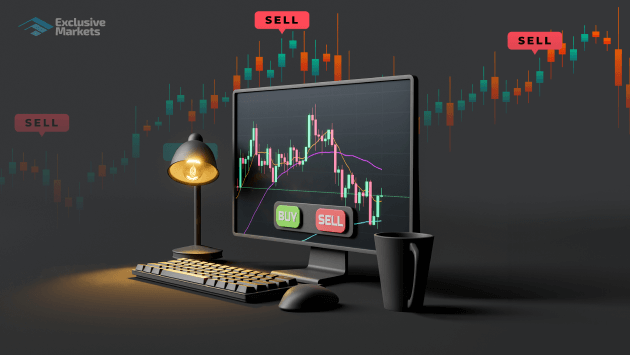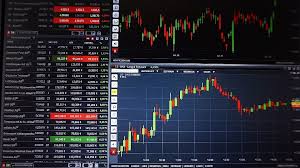trading6
Understanding Forex Trading A Comprehensive Guide 1497261375

What is Forex Trading?
Forex trading, also known as foreign exchange trading or currency trading, is the process of exchanging one currency for another in order to facilitate international trade or investment. The Forex market is the largest and most liquid financial market in the world, with daily trading volumes surpassing $6 trillion. Understanding the fundamentals of Forex trading can lead to profitable investment opportunities. For more detailed insights on various strategies and tools, visit what is trading forex fx-trading-uz.com.
The Basics of Forex Trading
At its core, Forex trading involves the buying and selling of currency pairs. Currencies are quoted in pairs, such as EUR/USD or GBP/JPY, where the first currency is known as the base currency and the second one is called the quote currency. The exchange rate indicates how much of the quote currency is needed to purchase one unit of the base currency. Trading in this manner means that the trader speculates whether the base currency will strengthen or weaken against the quote currency.
How Does Forex Trading Work?
The Forex market operates 24 hours a day, five days a week, and is accessible globally, allowing traders from various time zones to participate. Traders can enter and exit positions at any time, based on their analysis and market conditions.
Forex brokers facilitate the trading process by providing access to the market and offering trading platforms where traders can execute their orders. These platforms provide tools for market analysis, allow traders to place orders, and manage their positions effectively.
Types of Forex Markets

There are three main types of forex markets:
- Spot Market: The spot market is where currencies are bought and sold for immediate delivery. In other words, transactions are settled „on the spot“ at the current market price.
- Forward Market: In the forward market, contracts to buy or sell currencies at a predetermined price are created to be settled at a future date. This market is advantageous for businesses looking to hedge against exchange rate fluctuations.
- Futures Market: Similar to the forward market, futures contracts are standardized agreements to exchange currencies at a future date at a specified price. Unlike forwards, futures are traded on exchanges.
The Importance of Leverage in Forex Trading
One of the distinguishing features of Forex trading is the use of leverage. Leverage allows traders to control larger positions in the market with a relatively small amount of capital. For instance, a leverage ratio of 100:1 means that with a deposit of $1,000, a trader can control a position worth $100,000.
While leverage magnifies potential profits, it also increases the risk of significant losses. Therefore, it’s crucial for traders to use leverage wisely and implement risk management practices to protect their investments.
Forex Trading Strategies
Successful Forex trading often hinges on the implementation of effective strategies. Here are some common strategies employed by traders:
- Scalping: This short-term strategy involves making numerous trades throughout the day to capitalize on minor price fluctuations. Scalpers aim to make small profits from each trade.
- Day Trading: Day traders buy and sell currencies within the same trading day, closing all positions before the market closes to avoid overnight risks.
- Swing Trading: This medium-term strategy is based on capturing price swings over a few days to several weeks, taking advantage of trends and reversals.
- Position Trading: Long-term traders often use fundamental analysis to make decisions, holding positions for months or even years based on macroeconomic factors.
Technical and Fundamental Analysis in Forex Trading

Traders use two primary forms of analysis—technical and fundamental—to make informed trading decisions.
Technical Analysis: This approach relies on historical price data and trading volumes analyzed through charts and technical indicators. Traders identify patterns and trends to make predictions about future price movements.
Fundamental Analysis: Fundamental analysis considers economic indicators, geopolitical events, and interest rates to evaluate the intrinsic value of currencies. By analyzing news releases and reports, traders can anticipate currency movements.
The Risks of Forex Trading
Forex trading can be highly rewarding, but it also comes with a significant level of risk. Volatile market conditions can lead to rapid price changes, and without proper risk management, traders can incur severe losses. Some common risks include:
- Market Risk: The risk of losing money due to adverse movements in currency prices.
- Leverage Risk: Over-leveraging can lead to significant losses, which may exceed the initial investment.
- Interest Rate Risk: Fluctuations in interest rates can impact currency values significantly, making it essential for traders to be aware of central bank announcements and economic data releases.
- Liquidity Risk: In certain market conditions, finding a buyer or seller at the desired price can be challenging, resulting in slippage or unexpected losses.
Final Thoughts
Forex trading presents an array of opportunities for both novice and experienced traders. By understanding the fundamentals, developing effective strategies, and managing risks, traders can navigate the complex world of currency trading successfully. As with any investment, continuous education, practice, and patience are essential for achieving long-term success in the Forex market. With the right approach, traders can harness the power of Forex trading to achieve their financial goals.

